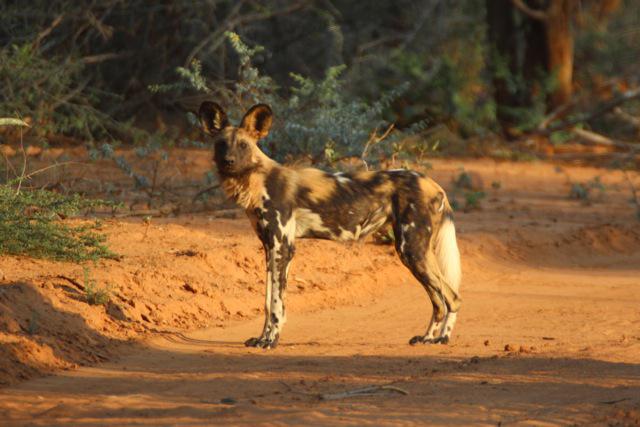Rosemary Groom
Other projects
12 Aug 2008
An Assessment of the Conservation Status of, and Threats Affecting, the Endangered African Wild Dog in the Zimbabwean Part of the Greater Limpopo Transfrontier Conservation Area
26 Mar 2012
Establishing a Mobile Education Unit for Rural Communities around Zimbabwe’s Savé Valley Conservancy
16 Apr 2014
Using Education and Community Engagement to Conserve the Endangered African Wild Dog and its Habitat in Southern Zimbabwe
We aim to protect the endangered African wild dog in the Zimbabwean part of the Greater Limpopo TFCA through education and outreach, anti-poaching, vaccination programs and monitoring of the wild dogs.

The African wild dog, Lycaon pictus, is the second most endangered large carnivore in Africa, with only an estimated 5,750 individuals left in the wild. Throughout their range, wild dog survival is threatened by habitat loss and/or fragmentation, wire snaring, disease, prey depletion (through illegal and unsustainable bushmeat hunting as well as habitat loss), human persecution and competition with lions. Such threats have increased considerably in south-east Zimbabwe since the onset of the Land Reform Program in 2000, which has caused the extirpation of wild dogs from many areas, with consequent loss of genetic diversity. We have documented land use trends and changes in the wild dog populations throughout the region since 2000, and, using the Savé Valley Conservancy (SVC) as our focal study area, we have investigated the major threats to existing wild dog populations (the latter funded by an RSG in 2009). The three main threats are habitat loss, snaring and disease.
The proposed project is therefore multi-disciplinary in nature. We will work at both the local and regional level to mitigate these established threats, through a combination of hands-on conservation (i.e. desnaring, giving rabies vaccines), education and outreach, and policy intervention, as well as continuing to monitor known wild dog packs in the region. Specific goals are outlined below:
Overall Goal: To mitigate the major threats to wild dogs in the Zimbabwean part of the GLTFCA, whilst promoting the effectiveness of the transfrontier park for the conservation of the species.
Objectives:
- Expanding environmental education and community outreach efforts
- Setting up long term, sustainable environmental education programs in several key schools
- Monitoring wild dog populations for information on survival rates and population dynamics
- Supporting and extending current anti poaching efforts to reduce wild dog deaths in snares, and de-snaring wild dogs where necessary
- Reducing the threat from rabies and canine distemper through vaccination campaigns
- Investigating and enhancing the effectiveness of the GLTFCA for wild dog conservation